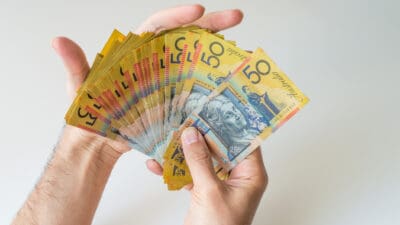Generating passive income is a key goal for many modern investors. 'But, where to start?', you may ask.
One effective strategy for building a passive income stream is to invest in a portfolio of Australian shares on the ASX. Here, you can buy interests in a wide array of quality companies that return cash to their shareholders in the form of dividends.
With this in mind, here's how I'd aim to transform $10,000 in savings into $526 in monthly passive income.
Which ASX shares to buy?
The first strategy I'd adopt in my quest to build long-term passive income is to focus on the ASX 200 index.
Sure, plenty of investors prefer to choose their own mix of individual dividend-paying stocks. But I'm attracted to the simplicity, diversification, and cost-effectiveness of investing in Australia's largest stock indexes. These generally offer stable returns and plenty of diversification, providing reliable growth over time.
The ASX 200 represents the largest companies on the ASX and, in my opinion, offers a good balance of risk and return.
Why the ASX 200 for passive income?
The Australian share market has historically delivered consistent returns. Since 2014, the ASX 200 index has seen average returns of around 8% per annum, including dividends.
Investors can essentially 'buy' exposure to the overall ASX 200 through the purchase of an index-tracking exchange-traded fund (ETF). This requires little effort to achieve the market's average returns. And, as they say: 'If you can't beat them, join them!'.
The iShares Core S&P/ASX 200 ETF (ASX: IOZ) is one such ETF.
Since its inception in December 2010, the fund has delivered an average annual return of 7.98%. The ETF has also grown its annual dividend from 95.12 cents per share in 2014 to $1.123 paid over the last 12 months – an 18% increase.
Based on the iShares Core S&P/ASX 200 ETF price of $31.72 at the time of writing, this equates to a trailing dividend yield of 3.54%, excluding franking credits.
A long horizon for growing passive income
The second ingredient I need for my passive income recipe is a long time frame. Let's call this my investment horizon.
If the ASX 200 continues to produce an average return of 7% to 8% each year, the power of compounding will kick in – and it will really start to deliver over time.
With a $10,000 investment, assuming a 7.5% average annual return, the starting capital would be worth $180,442 after 40 years.
Assuming the IOZ ETF's current dividend yield of 3.54% is maintained, this would then produce $6,388 in annual dividends or $532 in monthly passive income.
Foolish takeaway
With these two ingredients (and a sprinkling of patience!), a diversified portfolio of high-performing ASX stocks can lead to exceptional passive income over time. Just keep in mind that investing is always a long-term process and that past performance is no guarantee of future returns.









